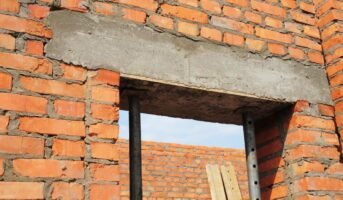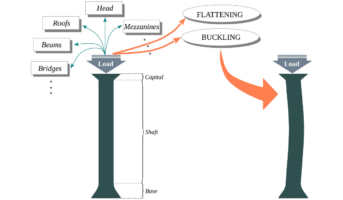Structural analysis is a critical aspect of construction that involves the evaluation of a building’s strength and stability. It is a systematic process that involves the use of mathematical and computational models to determine how a structure behaves under various loads and conditions. Structural analysis plays a vital role in the design and construction of buildings, bridges, and other structures. It helps engineers to identify potential problems and make necessary changes to the design to ensure that the structure will perform as intended.
Construction has come a long way since the days of simply building structures based on rough estimates and intuition. With the advent of advanced technologies, such as computer-aided design and advanced material sciences, engineers can now perform incredibly detailed and sophisticated analyses of structures. This enables them to make informed decisions about the materials, design, and construction methods that will ensure the structure will be safe and efficient.

Source: Pinterest
Structural analysis: Concept
Structural analysis is a scientific discipline concerned with determining the strength and stability of structures, such as buildings, bridges, and towers. It involves the use of mathematical and computational models to evaluate the behaviour of a structure under various loads and conditions. The goal of structural analysis is to ensure that a structure is safe, stable, and efficient and that it will perform as intended over its design life.
The process of structural analysis starts with a detailed understanding of the loads that will be applied to the structure, including the weight of the structure itself, the weight of its contents, and external loads such as wind, earthquakes, and temperature fluctuations. This information is then used to create a mathematical model of the structure, which is solved to determine the forces and moments in the structure and how they are distributed.
The results of the structural analysis are then used to make informed decisions about the design of the structure, including the choice of materials, the size and shape of the structural elements, and the construction methods to be used. The process of structural analysis is iterative, and the design may be refined based on the results of the analysis until the structure meets the design requirements.
Structural analysis: Importance
Structural analysis is a crucial aspect of building design that helps ensure the safety, stability, and longevity of structures. It is a systematic process that involves the evaluation of a building’s strength and stability using mathematical and computational models. The importance of structural analysis in building design can be seen in several ways:
- Safety: Structural analysis helps identify potential problems and weaknesses in the design that could lead to structural failure. This allows engineers to make necessary changes to the design to ensure the building will be safe and secure for its occupants.
- Optimisation: By performing structural analysis, engineers can optimise the design of the structure, making it more efficient and reducing the amount of material needed. This leads to cost savings and a more sustainable structure.
- Performance: Structural analysis helps engineers understand how a structure will perform under various loads and conditions. This enables them to make informed decisions about the materials and construction methods that will ensure the structure will perform as intended.
- Future proofing: Structural analysis also helps engineers to anticipate how a building will perform over time. This includes how it will respond to changes in the environment, such as wind, earthquakes, and temperature fluctuations. This information can be used to design the building to withstand these conditions, ensuring its longevity.

Source: Pinterest
Structural analysis: Types
There are several types of structural analysis that are commonly used in construction, each with its own set of advantages and disadvantages. Some of the most common types of structural analysis include:
- Statics: Statics is a type of structural analysis that focuses on the equilibrium of structures under static loads, such as gravity. It is used to determine the forces and moments in a structure and how they are distributed throughout the structure.
- Dynamics: Dynamics is a type of structural analysis that focuses on the response of structures to dynamic loads, such as earthquakes or wind. It is used to determine the natural frequencies and mode shapes of a structure and how it will respond to dynamic loads.
- Stability: Stability analysis focuses on the ability of a structure to resist collapse or lateral displacement. This includes the evaluation of buckling, lateral drift, and torsional stability.
- Finite Element Analysis (FEA): FEA is a type of computational analysis that involves dividing a structure into a large number of smaller elements and using computer algorithms to solve for the behaviour of each element. This type of analysis is used to determine the distribution of stresses and strains in a structure and how they change over time.
- Linear and Nonlinear Analysis: Linear analysis assumes that the relationship between loads and deflections is linear, while nonlinear analysis accounts for nonlinear behaviour such as material yielding or plastic behaviour.
These are just a few of the most common types of structural analysis used in construction. By understanding the different types of structural analysis and their strengths and weaknesses, engineers can make informed decisions about which type of analysis to use for a particular project.
Structural analysis: Methods
Structural analysis is a critical aspect of construction that involves evaluating a building’s strength and stability. There are several methods of structural analysis used in construction, including:
- Hand Calculations: Hand calculations are a simple and straightforward method of structural analysis that involves solving for the forces and moments in a structure using basic mathematical equations. This method is often used for simple structures and is a good starting point for more complex analyses.
- Computer-Aided Analysis: Computer-aided analysis is a type of structural analysis that involves using computer software to solve the behaviour of a structure. This method is faster and more accurate than hand calculations and can be used to analyse complex structures with many variables.
- Experimental Testing: Experimental testing is a type of structural analysis that involves physically testing a structure to determine its behaviour under loads. This method is often used in conjunction with computer-aided analysis and hand calculations to validate the results of the analysis.
- Load Testing: Load testing is a type of experimental testing that involves applying loads to a structure to determine its behaviour under those loads. This method is used to determine the load-bearing capacity of a structure and to validate the results of the analysis.
- Monitoring: Monitoring is a type of structural analysis that involves observing a structure over time to determine its behaviour. This method is often used to monitor the performance of structures in real-world conditions and to validate the results of the analysis.
FAQs
How is structural analysis used in building design?
Structural analysis is used to determine the forces and moments in a structure, to choose the appropriate materials, size and shape of structural elements, and to optimise the design of a building.
What are the factors considered in structural analysis?
Factors considered in structural analysis include loads, materials, construction methods, and environmental conditions. These factors are used to create a mathematical model of the structure, which is solved to determine its behaviour under loads.
| Got any questions or point of view on our article? We would love to hear from you.
Write to our Editor-in-Chief Jhumur Ghosh at [email protected] |
Housing News Desk is the news desk of leading online real estate portal, Housing.com. Housing News Desk focuses on a variety of topics such as real estate laws, taxes, current news, property trends, home loans, rentals, décor, green homes, home improvement, etc. The main objective of the news desk, is to cover the real estate sector from the perspective of providing information that is useful to the end-user.
Facebook: https://www.facebook.com/housing.com/
Twitter: https://twitter.com/Housing
Email: [email protected]











